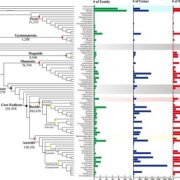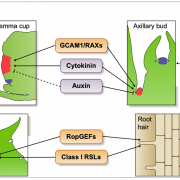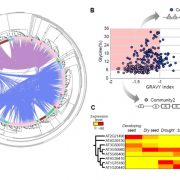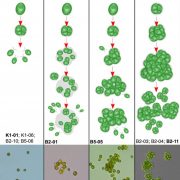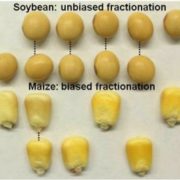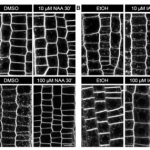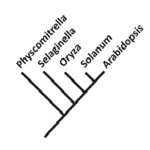An evidence-based 3D reconstruction of Asteroxylon mackiei, the most complex plant preserved from the Rhynie chert (bioRxiv)
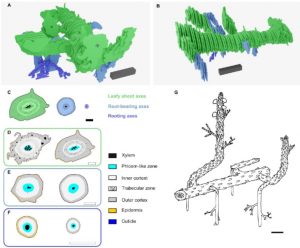 The Rhynie chert holds some of the oldest and best-preserved fossils of vascular plants (Rhynie is a village in north-east Scotland, and chert is a type of sedimentary rock). Analysis of thin section of fossils from here have provided the earliest cellular details of “rhizoid-based rooting systems, germinating spores and fossilised meristems.” But as Hetherington et al. observe, it is difficult to reconstruct overall body plans from thin sections. Here they have examined serial thick as well as thin sections of two complete lycopsid Asteroxylon mackiei plants, which are among the earliest group of land plants in the fossil record with complex body plans. Their findings demonstrate that the rooting system of these plants branched differently than what is observed in extant lycopsids. Specifically, in today’s plants the roots originate endogenously – the meristem of the new axis develops within the tissue of the parent axis and breaks through it. By contrast, the fossil plants show evidence of dichotomous branching (in which the tip of the parent axes splits), specifically anisotomous dichotomy meaning that the split is unequal. This type of root development, not found in extant lycopsids, is now extinct. (Summary by Mary Williams @PlantTeaching) bioRxiv 10.1101/2021.04.11.439326
The Rhynie chert holds some of the oldest and best-preserved fossils of vascular plants (Rhynie is a village in north-east Scotland, and chert is a type of sedimentary rock). Analysis of thin section of fossils from here have provided the earliest cellular details of “rhizoid-based rooting systems, germinating spores and fossilised meristems.” But as Hetherington et al. observe, it is difficult to reconstruct overall body plans from thin sections. Here they have examined serial thick as well as thin sections of two complete lycopsid Asteroxylon mackiei plants, which are among the earliest group of land plants in the fossil record with complex body plans. Their findings demonstrate that the rooting system of these plants branched differently than what is observed in extant lycopsids. Specifically, in today’s plants the roots originate endogenously – the meristem of the new axis develops within the tissue of the parent axis and breaks through it. By contrast, the fossil plants show evidence of dichotomous branching (in which the tip of the parent axes splits), specifically anisotomous dichotomy meaning that the split is unequal. This type of root development, not found in extant lycopsids, is now extinct. (Summary by Mary Williams @PlantTeaching) bioRxiv 10.1101/2021.04.11.439326


